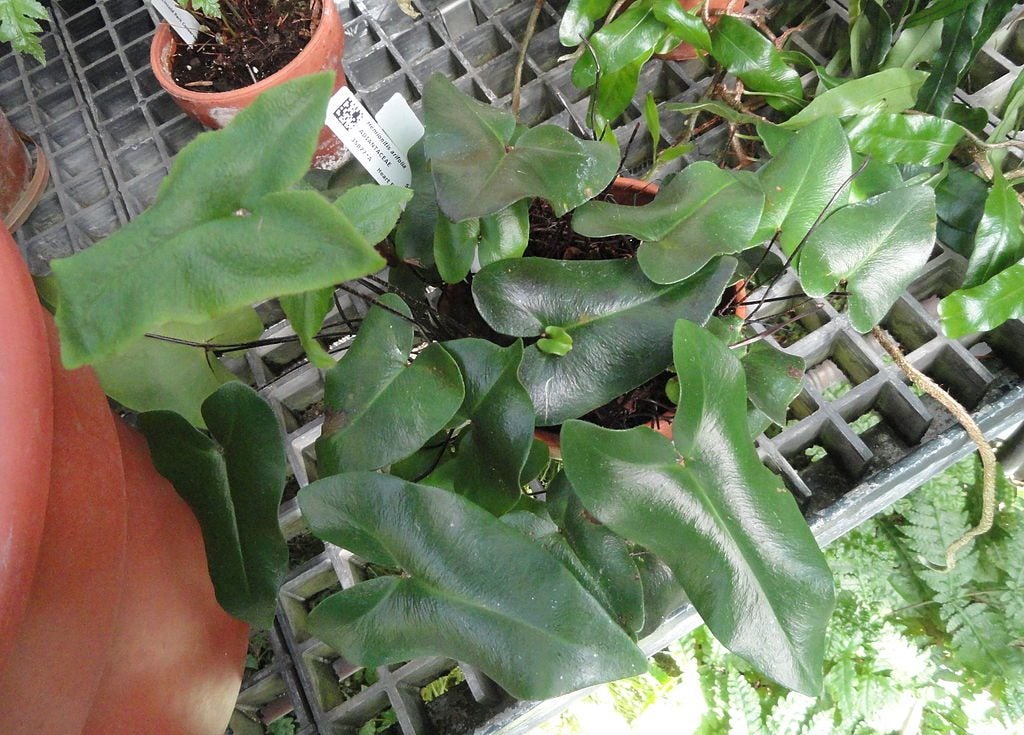Heart Fern Care: Tips On Growing Heart Ferns

I love ferns and we have our share of them in the Pacific Northwest. I'm not the only admirer of ferns and, in fact, many people collect them. One little beauty begging to be added to a fern collection is called the heart fern plant. Growing heart ferns as houseplants may take a little TLC, but is well worth the effort.
Information About the Heart Fern Plant
The scientific name for the heart leaf fern is Hemionitis arifolia and is commonly referred to by a number of names, including tongue fern. First identified in 1859, heart leaf ferns are native to Southeast Asia. It is a delicate dwarf fern, which is also an epiphyte, meaning it grows upon trees as well. It makes not only an attractive specimen to add to the fern collection, but is being studied for purported beneficial effects in the treatment of diabetes. The jury is still out, but early Asian cultures utilized heart leaf to treat the disease. This fern presents itself with dark green, heart-shaped fronds, about 2 to 3 inches (5-8 cm.) long and borne on black stems, reaching a height of between 6 and 8 inches (15-20 cm.) tall. Leaves are dimorphic, meaning some are sterile and some are fertile. The sterile fronds are heart shaped upon a 2 to 4 inch (5-10 cm.) thick stalk, while the fertile fronds are shaped like an arrowhead on a thicker stalk. The fronds are not the stereotypical fern leaves. Heart fern's foliage is thick, leathery, and slightly waxy. Like other ferns, it does not flower but reproduces from spores in the spring.
Heart Fern Care
Since this fern is native to regions of warm temperatures and high humidity, the challenge for the gardener growing heart ferns as houseplants is in maintaining those conditions: low light, high humidity, and warm temperatures. If you reside in an area with climactic outdoor conditions that mimic those above, then heart fern may do well in an area outdoors, but for the rest of us, this little fern should grow in a terrarium or a shaded place in an atrium or greenhouse. Keep the temperature between 60 and 85 degrees F. (15-29 C.) with lower temps at night and high ones during the day. Increase the humidity level by keeping a gravel filled drainage tray beneath the fern. Heart fern care also tells us that this evergreen perennial needs well-draining soil that is fertile, moist, and humus rich. A mix of clean aquarium charcoal, one part sand, two parts humus, and two parts garden soil (with a bit of fir bark for both drainage and moisture) is recommended. Ferns don't need a lot of extra fertilizer, so only feed once a month with a water-soluble fertilizer diluted in half. The heart fern houseplant needs bright, indirect sunlight. Keep the plant moist, but not wet, as it is prone to rot. Ideally, you should use soft water or let hard tap water sit overnight to dissipate the harsh chemicals and then use the next day. Heart fern is also prone to scale, mealybugs, and aphids. It is best to remove these by hand rather than relying on a pesticide, though neem oil is an effective and organic option. All in all, heart fern is a fairly low maintenance and thoroughly delightful addition to a fern collection or for anyone that wants a unique houseplant.
Sign up for the Gardening Know How newsletter today and receive a free copy of our e-book "How to Grow Delicious Tomatoes".

Amy Grant has been gardening for 30 years and writing for 15. A professional chef and caterer, Amy's area of expertise is culinary gardening.
